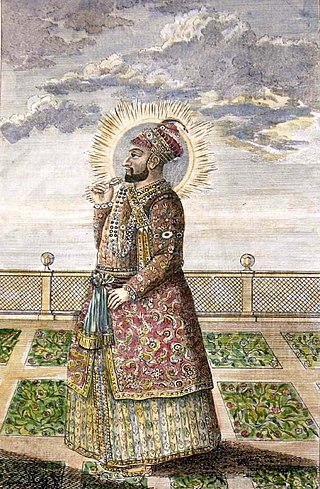
Hyder Ali was the Sultan and de facto ruler of the Kingdom of Mysore in southern India. Born as Hyder Ali, he distinguished himself as a soldier, eventually drawing the attention of Mysore's rulers. Rising to the post of Dalavayi (commander-in-chief) to Krishnaraja Wodeyar II, he came to dominate the titular monarch and the Mysore government. He became the de facto ruler of Mysore as Sarvadhikari by 1761. During intermittent conflicts against the East India Company during the First and Second Anglo–Mysore Wars, Hyder Ali was the military leader.

Kolar district is a district in the state of Karnataka, India.
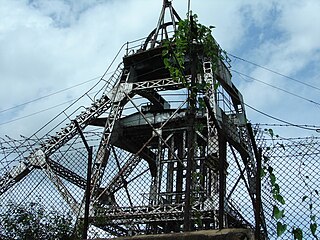
Kolar Gold Fields (K.G.F.) is a mining region in K.G.F. taluk (township), Kolar district, Karnataka, India. It is headquartered in Robertsonpet, where employees of Bharat Gold Mines Limited (BGML) and BEML Limited and their families live. K.G.F. is about 30 kilometres (19 mi) from Kolar, 100 kilometres (62 mi) from Bengaluru, capital of Karnataka. Over a century, the town has been known for gold mining. The mine closed on 28 February 2001 due to a fall in gold prices, despite gold still being present there. One of India's first power-generation units was built in 1889 to support mining operations. The mine complex hosted some particle physics experiments between the 1960s and 1992.

Gooty is a town in Anantapur district of the Indian state of Andhra Pradesh. It is the headquarters of Gooty mandal in Anantapur revenue division. The town is renowned for the Gooty hill fort.
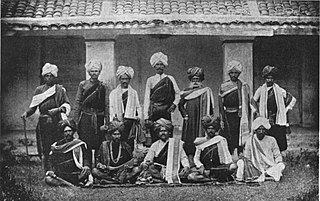
Vokkaliga is a community of closely related castes, from the Indian states of Karnataka and Tamil Nadu.
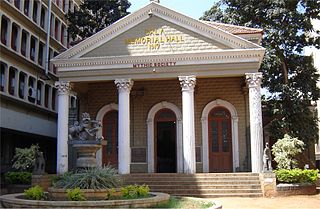
The Daly Memorial Hall, is a heritage building located in Bangalore, Karnataka that houses the Mythic Society. The Mythic society, founded in 1909, is a pioneering institution of Catholic-Indic studies in South India. Daly Memorial Hall, built at a cost of INR 24,783, was inaugurated on 25 July 1917 by the Kanteerava Narasimharaja Wadiyar (the Yuvaraja of Mysore. The Hall is named after Sir Hugh Daly, who served as the Resident of Mysore State and Chief Commissioner of Coorg.
Nayakas of Chitradurga ruled parts of eastern Karnataka during the post-Vijayanagara period. During the rule of Hoysala Empire and Vijayanagara Empire, they served as a feudatory chiefdom. Later, after the fall of the Vijayanagara empire, they ruled at times as an independent chiefdom and at other times as a vassal of the Mysore Kingdom, Mughal Empire and Maratha Empire. Finally, their territories merged into the province of Mysore under the British.

Nayakas of Keladi (1499–1763), also known as Nayakas of Bednore and Ikkeri Nayakas, were an Indian dynasty based in Keladi in present-day Shimoga district of Karnataka, India. They were an important ruling dynasty in post-medieval Karnataka. They initially ruled as a vassal of the famous Vijayanagar Empire. After the fall of the empire in 1565, they gained independence and ruled significant parts of Malnad region of the Western Ghats in present-day Karnataka, most areas in the coastal regions of Karnataka and the central plains along the Tungabhadra river. In 1763 AD, with their defeat to Hyder Ali, they were absorbed into the Kingdom of Mysore. They played an important part in the history of Karnataka, during a time of confusion and fragmentation that generally prevailed in South India after the fall of the Vijayanagar Empire. The Keladi rulers were of the Vokkaliga and Banajiga castes and were Veerashaivas by faith. The Haleri Kingdom that ruled over Coorg between 1600 A.D and 1834 A.D. was founded by a member of the Keladi family.
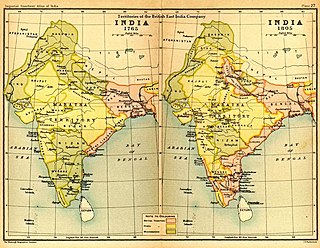
The Maratha Conquests were a series of conquests in the Indian subcontinent which led to the building of the Maratha Empire. These conquests were started by Shivaji in 1659, from the victory at the Battle of Pratapgad against Bijapur. The expansion of the empire was limited and interrupted by the Mughal conquests of south India by Mughal ruler Aurangzeb until he eventually died in 1707 in Deccan itself. Marathas were forced to defend their territories against the overwhelmingly strong Mughal army in the 27 years long Deccan wars. They were able to defend their territories and gain an upper hand over Mughals in the sustained conflict.

The siege of Trichinopoly was part of an extended series of conflicts between the Nizam of Hyderabad and the Maratha Empire for control of the Carnatic region. On 29 August 1743, after a six-month siege, Murari Rao surrendered, giving Nizam ul Mulk (Nizam) the suzerainty of Trichinopoly. By the end of 1743, the Nizam had regained full control of Deccan. This stopped the Maratha interference in the region and ended their hegemony over the Carnatic. The Nizam resolved the internal conflicts among the regional hereditary nobles (Nawabs) for the seat of governor (Subedar) of Arcot State, and monitored the activities of the British East India company and French East India Company by limiting their access to ports and trading.
Murari Rao Ghorpade (1699-1779), known simply as Murari Rao, was an army general in the Maratha Army from Gooty who administered the fort of Tiruchirappalli and surrounding areas from 1741 to 1743. His administration marks the only period of Maratha occupation in Tiruchirappalli. Murari Rao occupied Tiruchirappalli at the head of a strong Maratha army after defeating and imprisoning the Carnatic general Chanda Sahib. However, he was forced to relinquish the fort after administering it for a period of two years. Murari Rao Ghorpade was the founder of the Ghati Subramanya Temple and the Makalidurga Fort.
At present there is no official flag for the state of Karnataka in India. However a number of historical and cultural flags have been used in the state.
Maharani Gautama Bai Holkar [Tai Sahib] was one of the queens of Malhar Rao Holkar III, Maharaja of Indore. After the death of her husband in 1833, she and her mother-in-law Krishna Bai Holkar adopted Marthand Rao Holkar, the son of Bapu Rao, a member of the Holkar family and then, under popular and military pressure, Hari Rao Holkar to succeed him.

Sondekoppa Srikanta Sastri was an Indian historian, Indologist, and polyglot. He authored around 12 books, over two hundred articles, several monographs and book reviews over four decades in English, Kannada, Telugu and Sanskrit. These include "Sources of Karnataka History", "Geopolitics of India & Greater India", "Bharatiya Samskruthi" and "Hoysala Vastushilpa". S. Srikanta Sastri was a polyglot well versed in fourteen languages spanning Greek, Latin, Pali, Prakrit, Sanskrit and German among others. He was Head of the Department of History & Indology at Maharaja College, University of Mysore between 1940 and 1960. He was conferred the Kannada Literary Academy award in 1970 and was subsequently honoured by Governor of Karnataka Mohanlal Sukhadia in 1973 during mythic society diamond jubilee function. A Festschrift was brought forth and presented to him during his felicitation function in 1973 titled "Srikanthika" with articles on History and Indology by distinguished scholars. His work on Indus Valley civilization and town planning at Harappa and Mohenjodaro were published in successive articles and drew considerable attention. His articles on The Aryan Invasion theory, the date of Adi Sankaracharya, Oswald Spengler's view on Indian culture, Jaina epistemology, Proto-Vedic religion of Indus Valley Civilization and evolution of the Gandabherunda insignia remain relevant today.

The Gutti Fort, also known as Ravadurg and Gutti Kota, is a ruined fort located on a hill in the Gutti town of Andhra Pradesh, India. The town of Gutti is located in the Ananthapur district of Andhra Pradesh. It is one of the centrally protected monuments of national importance.
Arni Jagir was a Jagir (estate) and a permanently settled zamindari estate that existed in the North Arcot subdivision of the North Arcot district of the erstwhile Madras Presidency in British India from 1638 to 1948.
Kabbaldurga is a ruined fort located in Ramanagara district, Karnataka. It is at a distance of 75 km from Bangalore. Murari Rao Ghorpade, 18th century Maratha chieftain who controlled Gooty was defeated by Hyder Ali in 1776 AD and kept in Kabbaldurga fort till death. Murari Rao surrendered and sent to this fort along with his family members. During British Raj, convicts were thrown off the cliff of this port, as a punishment. As it is near Bangalore, it is a favourite trekking destination, which is a relatively easy trekking and night trekking is also undertaken by private groups. Old and crumbling buildings on top of the fort represent a prison, garrison, ammunition storage godown and there are small temples of Bheemalilngeshwara and Kabbalamma temple.
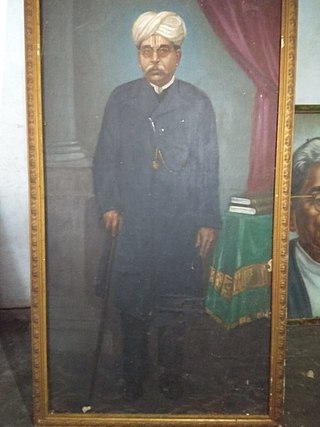
Raja Kanchumarthi Ramachandra Rao was a zamindar of Dharmavaram. He is notable for the development of Rajahmundry. He was the son of Kanchumarthi Narasayya Naidu.
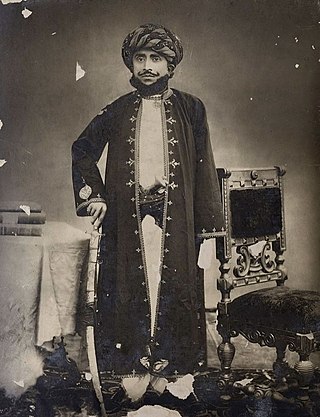
Harisinhji Jaisinhji was the Thakore of Dhrol from 1886 until 1914.
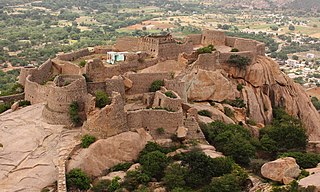
Madakasira Fort, also known as Simhagiri, is a hill fort located in the Madakasira town of Sri Sathya Sai district, in Andhra Pradesh, India. The Government of India has designated it as a Monument of National Importance.












